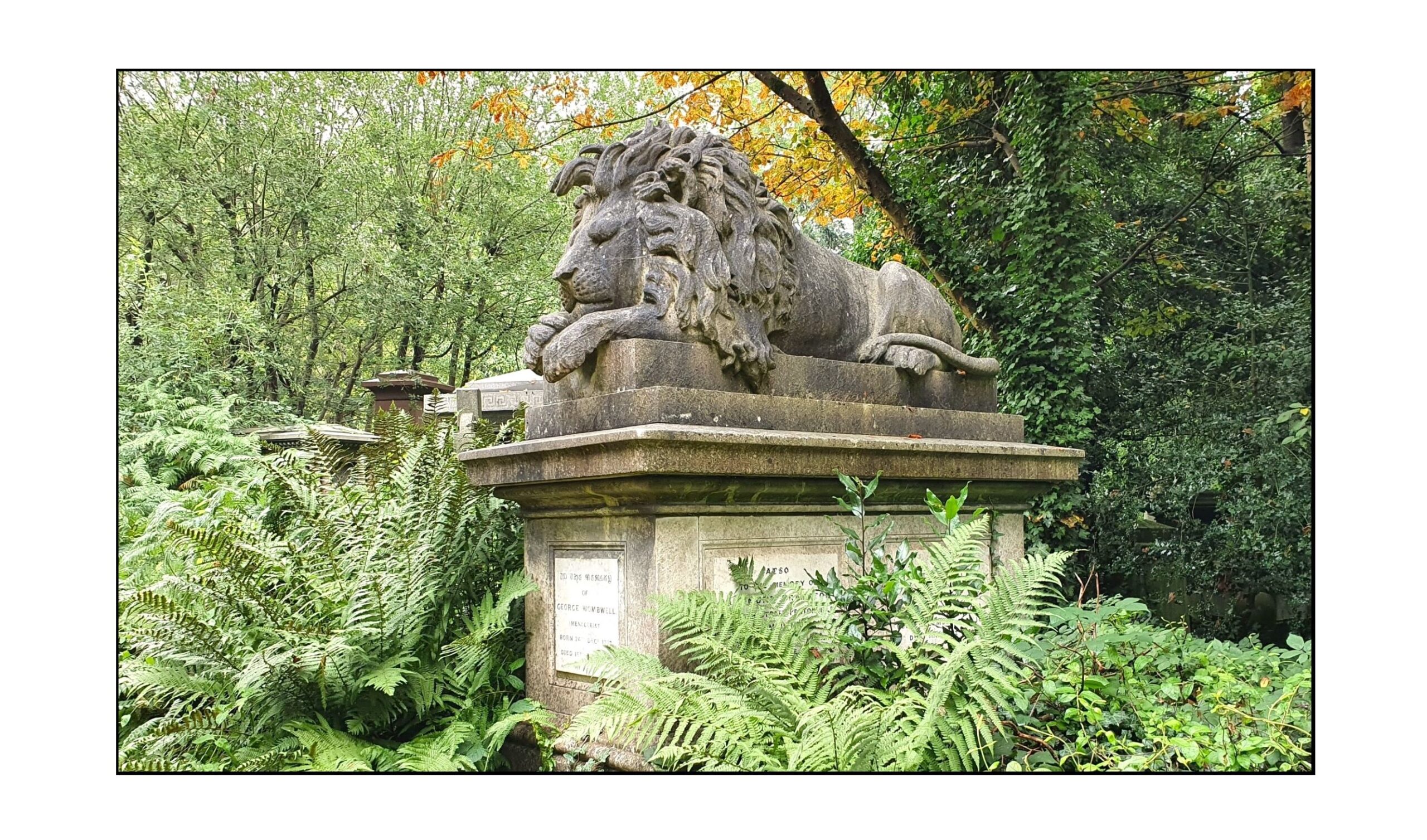
Not being one for cute kitty pictures, YouTube videos of puppies being adorable or sugar-coated history, I’ve compiled a sample of the lesser known, more interesting but frequently rather unpleasant stories of animals in London. To any fellow Londoners reading this, I have to warn you that we do not come out of this well. If you have young children with you, skip to the bits at the end about sheep and Dr. Johnson’s cat.
Chunee the Elephant. The Exeter ‘Change was a failed business venture on the Strand, adapted as a home from 1773 to 1829 for ‘lions, tigers, elephants, ouran-outangs, and a long et cetera of animals, rare and interesting to the people of England’ (Malcolm, 1807). At one point the collection included a tapir – described as a hippopotamus by management – that Lord Byron claimed looked like Lord Liverpool, the Prime Minister, with a sloth that looked like his valet. Fancied himself as a comedian, did that Byron. Most of the collection was housed on upper floors of the building.
In 1826 Chunee, a former star of the Covent Garden pantomime, was in must, a periodic bull elephant condition producing aggressive behavior. He became uncontrollable. As only the flooring of his cage was reinforced, there was a danger he would break free and come crashing down to the ground floor, with the potential to then reach the Strand. The decision was taken to kill him, and Gordon (1903) describes in gruesome detail the attempts by marksmen and soldiers to bring him down, even as his keeper shouted commands which the terrified and enraged animal obeyed. One hundred and twenty musket balls couldn’t bring him down; the hapless Elephas maximus indicus was supposedly finished off by harpoon.
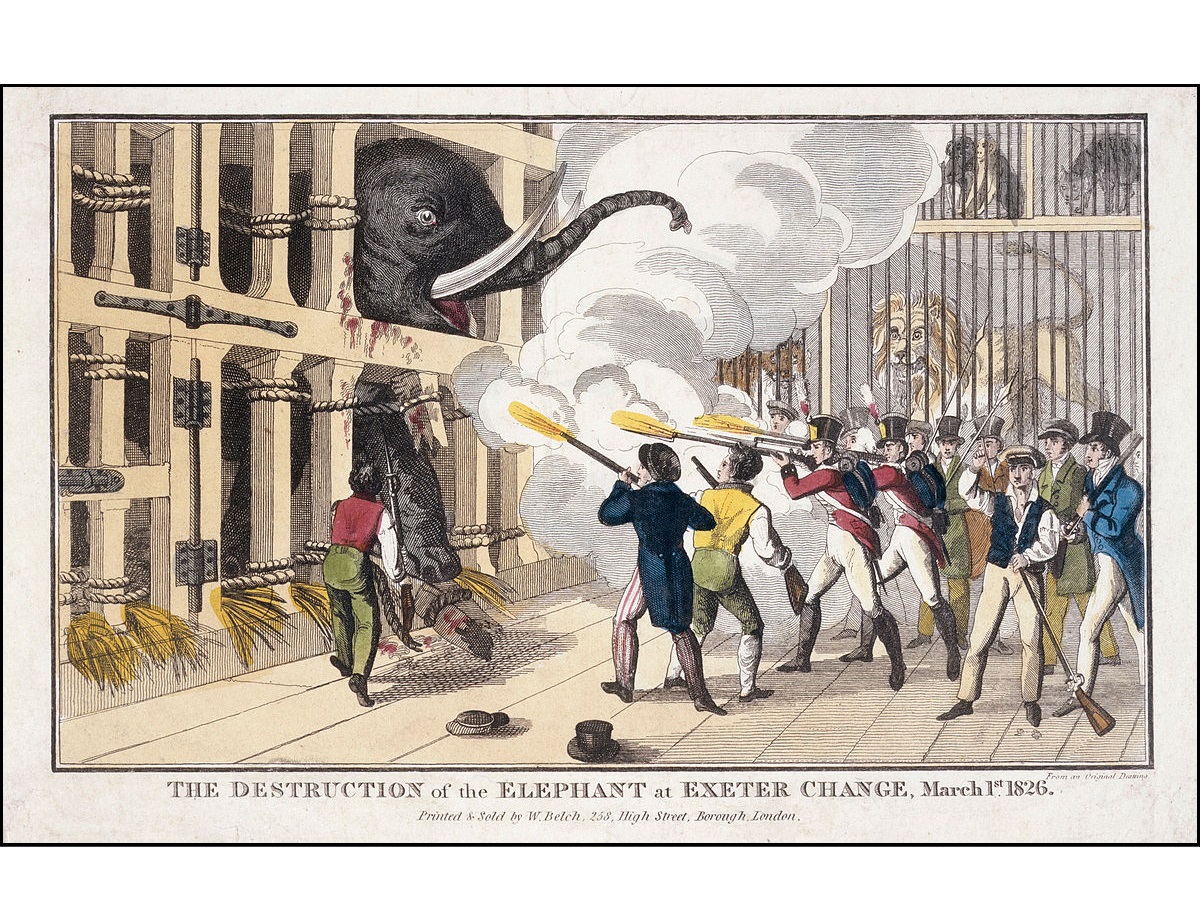
→ A cheap print, no doubt rushed out in 1826 to capitalise on the recent sensation. Note the raised cage floor. The owner later displayed Chunee’s skeleton as part of the menagerie.
The animals were eventually sold off to Surrey Zoological Gardens, which hopefully improved their conditions a little. The site is now occupied by the Strand Palace Hotel.
The Eastcheap Mice. High on the wall of a Victorian edifice at 23 Eastcheap are two mice eating cheese. An oft-repeated tale has it that during construction c.1860, one workman accused another of eating his sandwiches. In the ensuing fight, the two men fell to their deaths. Too late did the finger of suspicion point at some resident London Mus musculus.
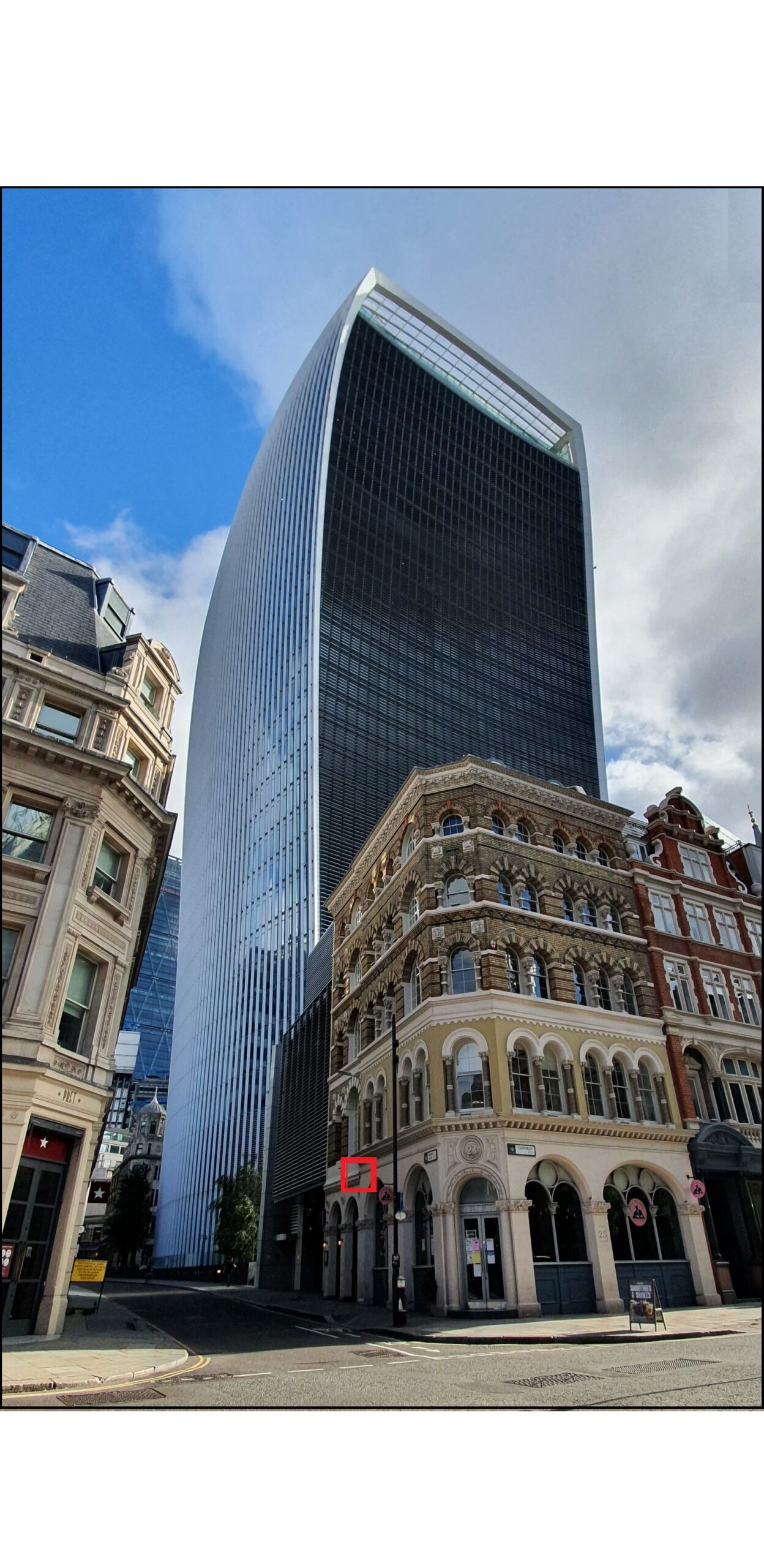
← 23 Eastcheap, now dominated by the ‘Walkie-Talkie Building’. The red box indicates the position of the mice. → Close-up of the Eastcheap mice and their cheese

→ Close-up of the Eastcheap mice and their cheese
Old Tom the Gander. The information board at Leadenhall Market tells the early 19th century tale of this lovelorn Ostend-born Anser anser domesticus, who cleverly managed to accompany his favoured goose when she was shipped to London to meet her apple sauce-related fate. This brought him to Leadenhall – then a poultry market – but he somehow survived and became a favourite among stallholders and innkeepers, being fed tasty morsels instead of becoming one.
Avoiding the fate of most of his species, Old Tom died a natural death at the ripe old age of 38 and was buried in the market.
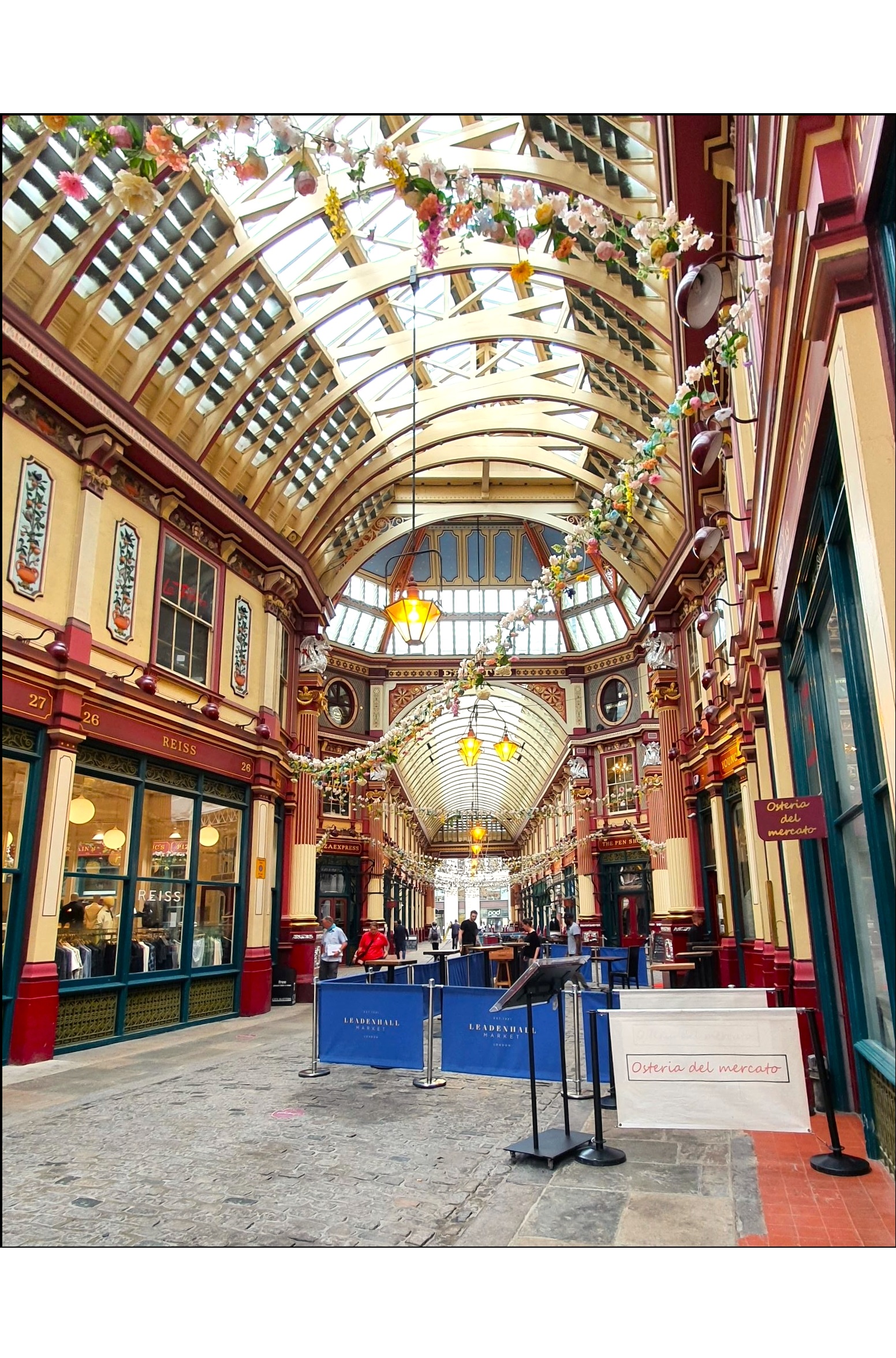
← Leadenhall Market today. A spectacular 1881 rebuild which featured in the Harry Potter films, but sadly not the environment Old Tom would have known.
The First Rhinoceros in London. The Bell Savage Inn on Ludgate Hill saw many things in its time, including performances by the renowned comic actor Richard Tarlton, who may have been Shakespeare’s inspiration for Yorick; Pocahontas as a paying guest; and Grinling Gibbons, the renowned wood carver, as a resident. In 1666 the Great Fire came a-calling. However, nothing could have prepared its patrons for what turned up in 1684.
The London Gazette of 10th October had an advertisement for a ‘Very strange Beast called a Rhynoceros’. It had arrived from Golconda in India earlier the same year, and was the first of its kind in Europe since 1515. It was exhibited at the Bell Savage; visitors were charged one shilling to look, and two to ride on its back. Quite what the horses stabled there made of a Rhinoceros unicornis sharing their quarters is anyone’s guess.
Sadly but unsurprisingly, the rhino died just two years later. The Bell Savage survived until 1857 when it was demolished to make way for the Ludgate Hill railway bridge.
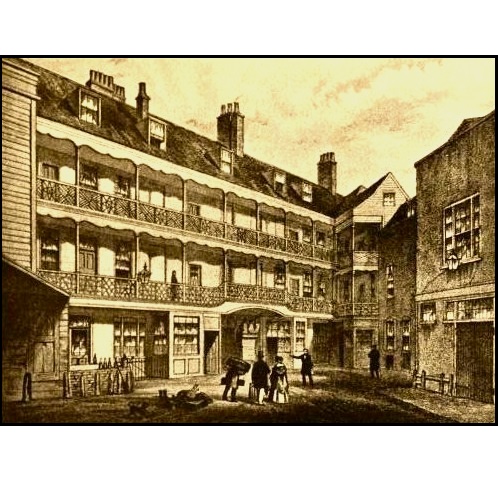
→ The Bell Savage just prior to demolition.
Nero the Docile Lion (featured photograph). George Wombwell (1777-1850) ran a touring menagerie which would appear regularly at Bartholomew Fair in London. One of his lions, Nero, was peaceful and compliant, but this didn’t – so the story goes – stop Wombwell from pitting him against a pack of bulldogs as a spectacle for profit. Nero refused to fight and a younger lion attacked the dogs instead. When Wombwell died, he was buried in the old West section of Highgate Cemetery with a magnificent life-sized stone representation of Nero lying asleep across the tomb. Perhaps this is supposed to represent Nero in repose, awaiting his owner, but there is a look of lost dignity in that sleeping giant that makes me uncomfortable.
Jamrach’s Tiger. Charles Jamrach was a dealer in exotic animals, with a shop on the Ratcliffe Highway next to London Docks and a menagerie close by in Betts Street. He would buy animals brought on ships to London from exotic locations. On one occasion he bought a ‘job lot’ of animals from a ship’s captain and arranged to have them moved the short distance from the dock to Betts Street. A large Bengal tiger escaped during the transfer. A young boy went to stroke it and ended up in its jaws being carried down the street. Jamrach gave chase and caught it, but claimed it took several blows to the tiger’s head with a crowbar before it released the boy. It then crept back into Jamrach’s yard, probably nursing concussion, where it was successfully recaptured.
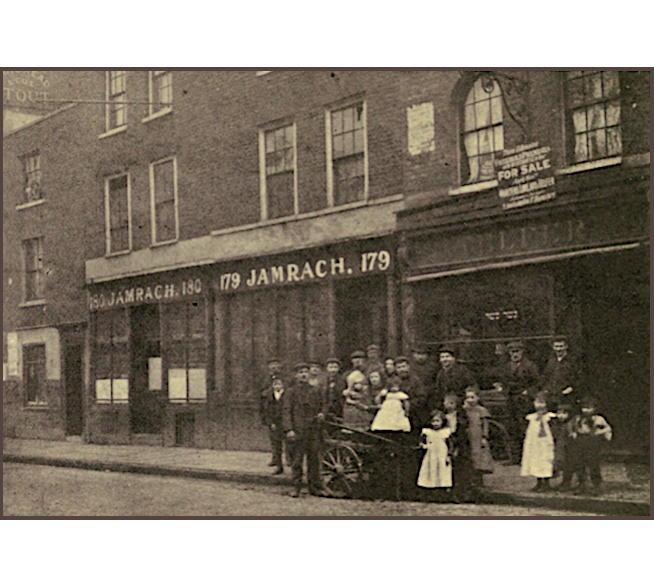
← The shop in the East End in 1901. A statue of a tiger and boy is in Tobacco Dock, near where the animal was unloaded. Neither tiger nor boy suffered any ill effects. However, the tiger was sold to Wombwell’s menagerie, while the boy got £60 compensation. Fairly obvious who got the best deal there.
The Sheep on London Bridge. Freemen of the City had the right to bring livestock into the City for slaughter and/or sale without having to pay a bridge toll. As there is now no toll, no slaughterhouses and no livestock markets in the City, the right doesn’t, in any meaningful sense, exist. However, there is a tradition developing to symbolically herd some Ovis aries over London Bridge once a year to raise money for charity, usually involving the worshipful company of woolmen and with a celebrity freeman on hand to increase publicity. The next sheep drive is scheduled for 27th September 2020 with Dame Kiri Te Kanawa and a ‘livery fair’, and will – possibly for the first time – take place on Southwark Bridge, due to London Bridge being indisposed. Check out the dedicated website – it might be fun.
And finally, a heartwarming kitty story. Not Dick Whittington’s cat – that never existed. I offer instead the story of Dr. Johnson’s cat. Little is known of ‘Hodge’ – we have only a passing reference in Boswell’s Life of Johnson, and Percival Stockdale’s poem An Elegy on the Death of Dr Johnson’s Favourite Cat. The good doctor doted on him and, lest the servants take against the feline, went out himself to buy Hodge fresh oysters.
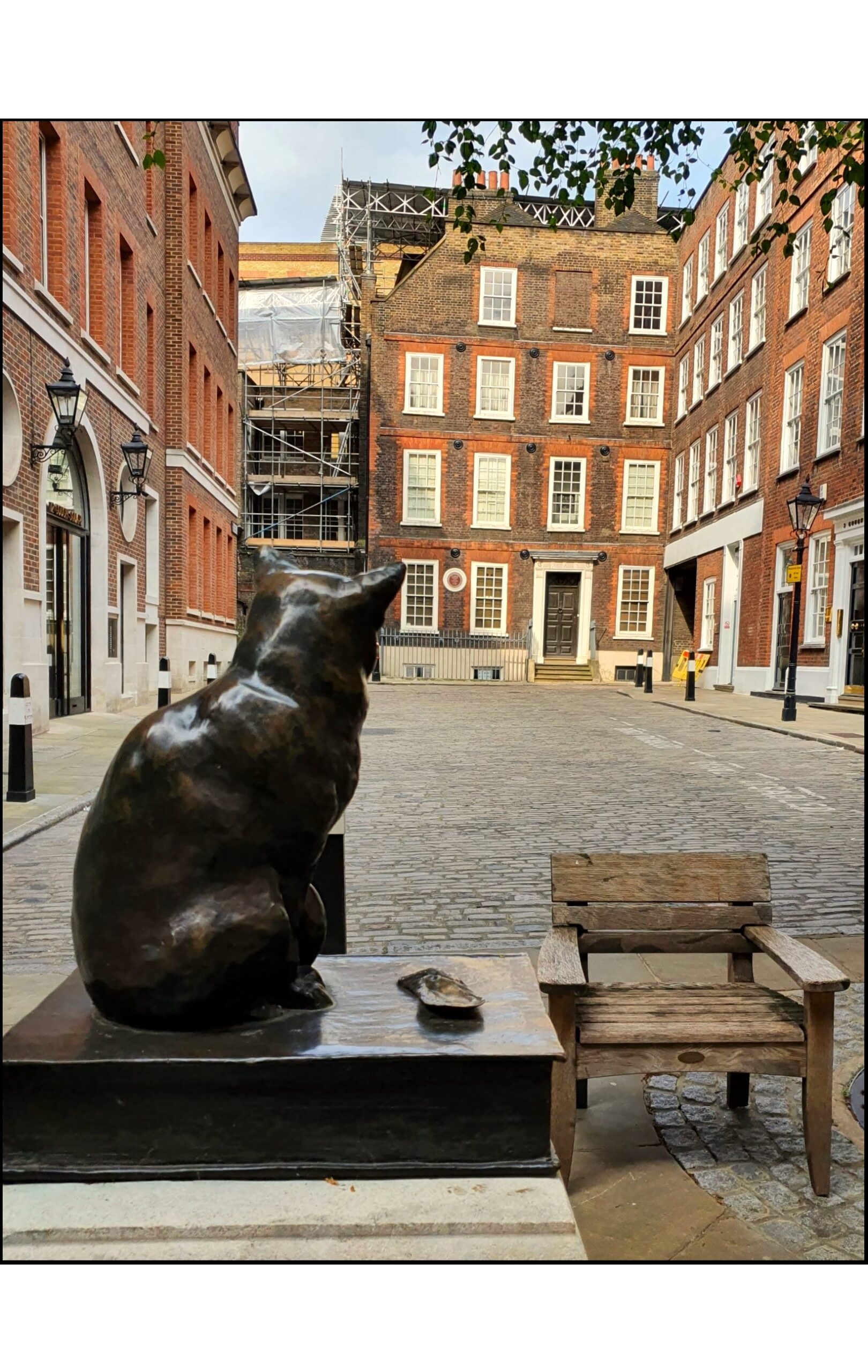
→ This wonderful statue, complete with oyster shells, is in Gough Square. Hodge is looking intently at his master’s home.
Nearest Stations for buildings still extant:
Selected Bibliography:
Credits:
Comments are closed.
Update: The next sheep drive over London Bridge has been postponed until 2021.